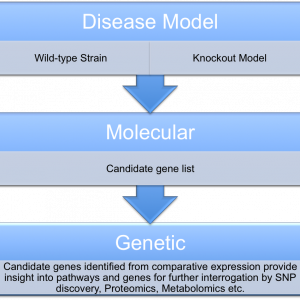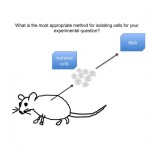Wow, you just generated a conditional knock-out mouse! A huge feat, and now you need to validate your model before characterization and testing your hypothesis. We’ve all heard it before, what about leaky or unwanted expression? Or do you know if non-target cells have gene ablation too? Did your knock-out strategy non-specifically target neighboring alleles? Get your qPCR, western blotting, and immunohistochemistry mojo on, right?
These classic assays are great for validating your model, but what about taking your research and hypothesis to the next level? With RNA-seq analysis of specific tissues at experimental time points you can address these traditional concerns, but also open doors for new questions. True, qPCR allows you to test gene expression, but only looking at select genes may hinder your analysis. By having a bird’s eye view of your knock-out model’s RNA expression you can identify entire gene pathways or better yet find the missing piece in your puzzle. Your analysis will go a long way towards your goals and those of the International Mouse Phenotyping Consortium. Perhaps you are on your way to testing the mechanism of your favorite protein in your conditional knock-out model. Comparing your experimental animals to control mice by RNA-seq is a powerful approach to glean those differences between animals. In fact, Cofactor Genomics has a partnership with SAGE labs that focuses on characterizing mice, rat, and rabbit models. Here at Cofactor Genomics we can help you design your experiment to best address your question and then help you identify interesting targets to further explore. All you need to do is get in touch.

In my next blog post, I will discuss cell isolation strategies that may be used in conjunction with animal models to obtain the best input material for RNA-seq library preparation.




